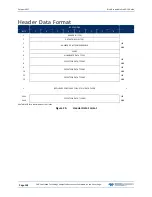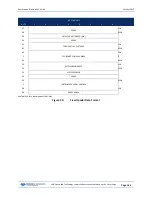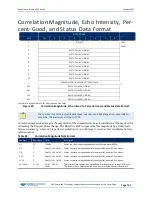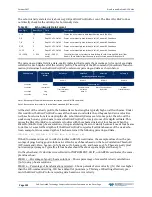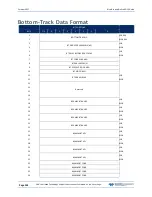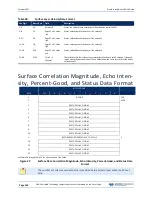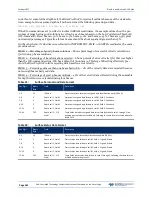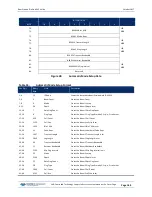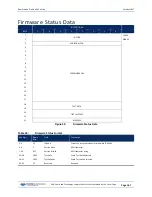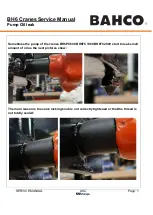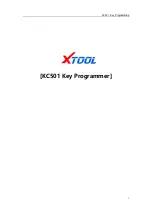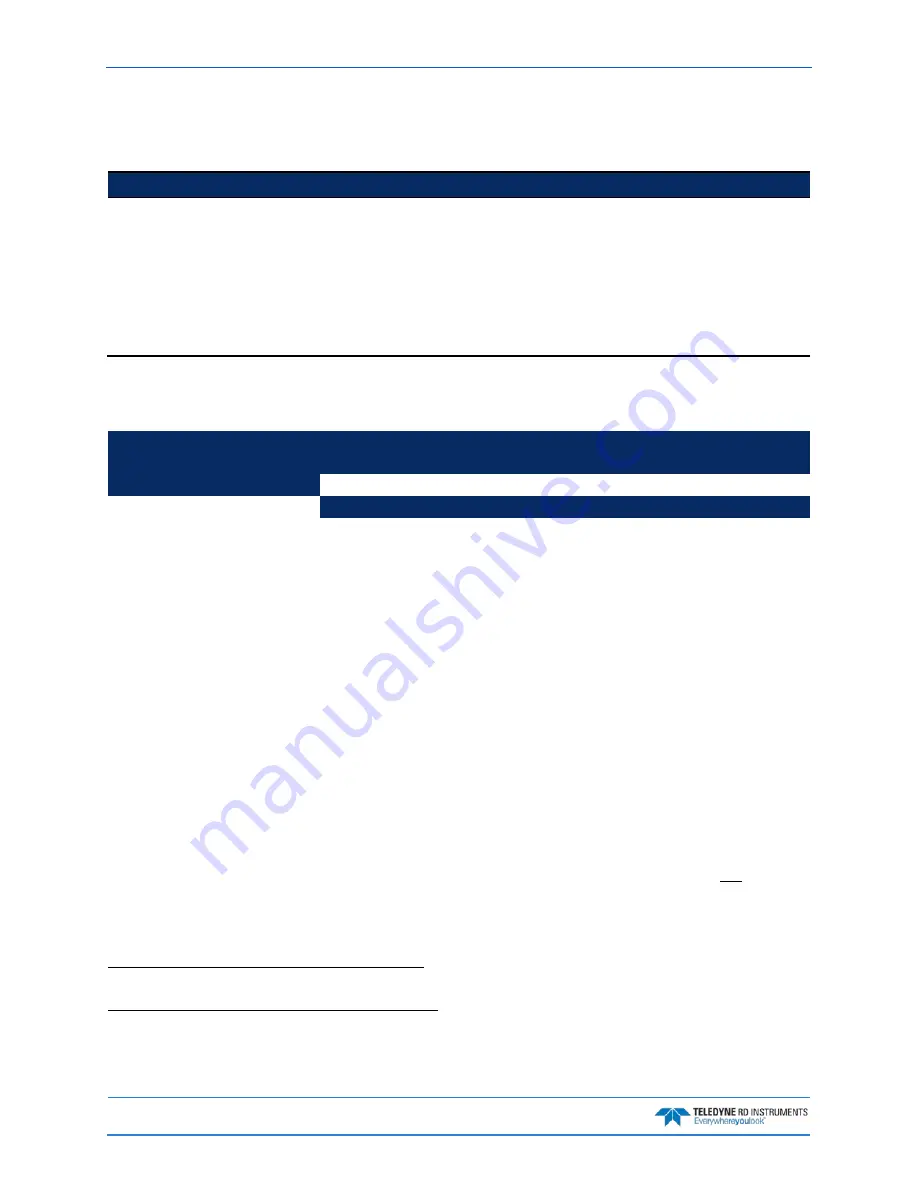
October 2017
RiverPro and RioPro ADCP Guide
Page 152
EAR-Controlled Technology Subject to Restrictions Contained on the Cover Page.
The echo intensity scale factor is about 0.45 dB per RiverPro/RioPro count. The RiverPro/RioPro does
not directly check for the validity of echo intensity data.
Table 23:
Echo Intensity Data Format
Hex Digit
Binary Byte
Field
Description
1 – 4
1,2
ID Code
Stores the echo intensity data identification word (00 03h).
5,6
3
Depth Cell 1, Field 1
Stores echo intensity data for depth cell #1, beam #1. See above.
7,8
4
Depth Cell 1, Field 2
Stores echo intensity data for depth cell #1, beam #2. See above.
9,10
5
Depth Cell 1, Field 3
Stores echo intensity data for depth cell #1, beam #3. See above.
11,12
6
Depth Cell 1, Field 4
Stores echo intensity data for depth cell #1, beam #4. See above.
13 – 1028
7 – 514
Cells 2 – 200 (if
used)
These fields store echo intensity data for depth cells 2 through 200 for all four
beams. These fields follow the same format as listed above for depth cell 1.
The percent-good data field is a data-quality indicator that reports the percentage (0 to 100) of good data
collected for each depth cell of the velocity profile. The setting of the EX-command (Coordinate Transfor-
mation) determines how the RiverPro/RioPro references percent-good data as shown below.
EX-Command
Coordinate
System
Velocity 1
Velocity 2
Velocity 3
Velocity 4
Percentage Of Good Pings For:
Beam 1
BEAM 2
BEAM 3
BEAM 4
xxx00xxx
Beam
Percentage Of:
xxx01xxx
Instrument
3-Beam
Transformations
(note 1)
Transformations
Rejected
(note 2)
More Than One Beam
Bad In Bin
4-Beam
Transformations
xxx10xxx
Ship
xxx11xxx
Earth
Note 1. Because profile data did not exceed correlation threshold (WC command).
Note 2. Because the error velocity threshold was exceeded (WE command).
At the start of the velocity profile, the backscatter echo strength is typically high on all four beams. Under
this condition, the RiverPro/RioPro uses all four beams to calculate the orthogonal and error velocities.
As the echo returns from far away depth cells, echo intensity decreases. At some point, the echo will be
weak enough on any given beam to cause the RiverPro/RioPro to reject some of its depth cell data. This
causes the RiverPro/RioPro to calculate velocities with three beams instead of four beams. When the
RiverPro/RioPro does 3-beam solutions, it stops calculating the error velocity because it needs four beams
to do this. At some further depth cell, the RiverPro/RioPro rejects all cell data because of the weak echo.
As an example, let us assume depth cell 60 has returned the following percent-good data.
FIELD #1 = 50, FIELD #2 = 5, FIELD #3 = 0, FIELD #4 = 45
If the EX-command was set to collect velocities in BEAM coordinates, the example values show the per-
centage of pings having good solutions in cell 60 for each beam based on the Low Correlation Threshold
(WC-command). Here, beam 1=50%, beam 2=5%, beam 3=0%, and beam 4=45%. These are not typical
nor desired percentages. Typically, all four beams should be about equal and greater than 25%.
On the other hand, if velocities were collected in INSTRUMENT, SHIP, or EARTH coordinates, the exam-
ple values show:
FIELD 1 – Percentage of good 3-beam solutions – Shows percentage of successful velocity calculations
(50%) using 3-beam solutions.
FIELD 2 – Percentage of transformations rejected – Shows percent of error velocity (5%) that was higher
than the WE-command setting. WE has a default of 5000 mm/s. This large WE setting effectively pre-
vents the RiverPro/RioPro from rejecting data based on error velocity.

